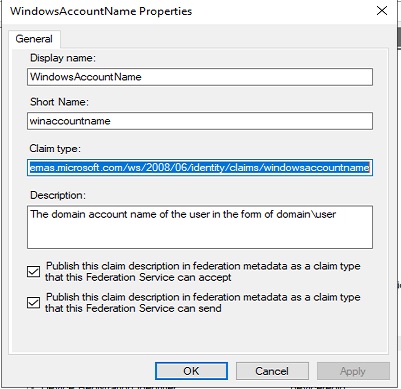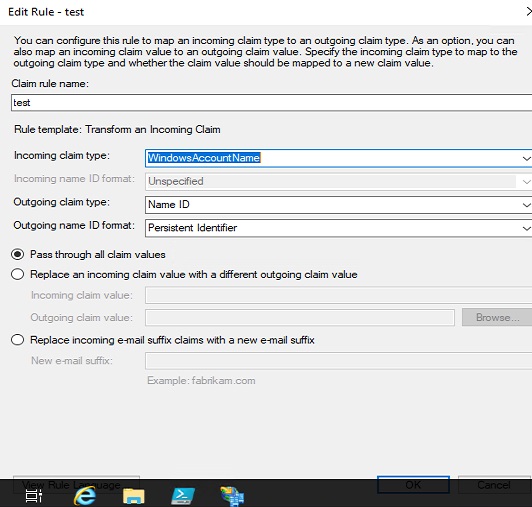This page cannot be called just as-is by typing the URL in the browser. You either need a query string telling you which WS-Federation enabled relying party trust you are trying to use, or a SamlRequest if you are trying to use a SAML enabled relying party trust.
If you want to do some testing, I suggest you create the test relying party trust as described here: https://adfshelp.microsoft.com/ClaimsXray/TokenRequest
Give it a try and let us know!
ADFS Saml Configuration
Hello,
I have questions regarding ADFS SAML configuration.
I have been charged with setting up ADFS SAML and connecting our system with clarity safetyzone.
I am using Using windows serv 2019 platform for the servers. I have created a test environment that has a domain controller, server with ADCS, and another server with ADFS. I have a certificate created within the ADCS server and I installed ADFS on the respective server. I verified after installation of the role and configuring an adfs administrator that the adfs administrator can sign into the https://sts.contoso.com/adfs/ls/idpinitiatedsignon.aspx, I created a windows test account and logged into the adfs server for testing purposes and when navigating to the https://sts.contoso.com/adfs/ls/ and attempting to sign in with that user, I get an error:
An error occurred
An error occurred. Contact your administrator for more information.
Error details
Activity ID: f68cc99a-b6e5-40dc-1a00-0080000000e5Error details: MSIS7065: There are no registered protocol handlers on path /adfs/ls/ to process the incoming request.Node name: 85253664-435b-4d04-8775-d4b96854cb12Error time: Mon, 02 Nov 2020 20:11:16 GMTCookie: enabledUser agent string: Mozilla/5.0 (Windows NT 10.0; Win64; x64) AppleWebKit/537.36 (KHTML, like Gecko) Chrome/86.0.4240.111 Safari/537.36
I have everyone permitted for intranet access in the Access Control Policies.
Am i missing something? Once i can verify that a standard user can login, then i can move on to the step of setting up the appropriate claims/trusts.
Does anyone have experience with this and maybe even experience with the Clarity Safety Zone platform?
Microsoft Security | Active Directory Federation Services
-
 Pierre Audonnet - MSFT 10,191 Reputation points Microsoft Employee
Pierre Audonnet - MSFT 10,191 Reputation points Microsoft Employee2020-11-03T01:18:11.897+00:00
3 additional answers
Sort by: Most helpful
-
-
JoeS-0122 41 Reputation points
2020-11-04T18:54:23.747+00:00 Hey thank you very much for the help yesterday. They came back to me saying there are no longer any errors however, they wondered if there was a way to pass just the username and not the domain\user. Can this be done?
-
 Pierre Audonnet - MSFT 10,191 Reputation points Microsoft Employee
Pierre Audonnet - MSFT 10,191 Reputation points Microsoft Employee2020-11-05T01:23:23.053+00:00 Yep. Many ways to do it. But the easiest way in our context (with having issues with the default rules) would be to adapt our custom rules such as:
c:[Type == "http://schemas.microsoft.com/ws/2008/06/identity/claims/windowsaccountname"] => issue(Type = "http://schemas.xmlsoap.org/ws/2005/05/identity/claims/nameidentifier", Issuer = c.Issuer, OriginalIssuer = c.OriginalIssuer, Value = regexreplace(c.Value, "(?<domain>[^\\]+)\\(?<user>.+)", "${user}"), ValueType = c.ValueType, Properties["http://schemas.xmlsoap.org/ws/2005/05/identity/claimproperties/format"] = "urn:oasis:names:tc:SAML:2.0:nameid-format:persistent");Make sure you mark the post as answered in case someone experience the same challenges that they can easily find a solution.
















